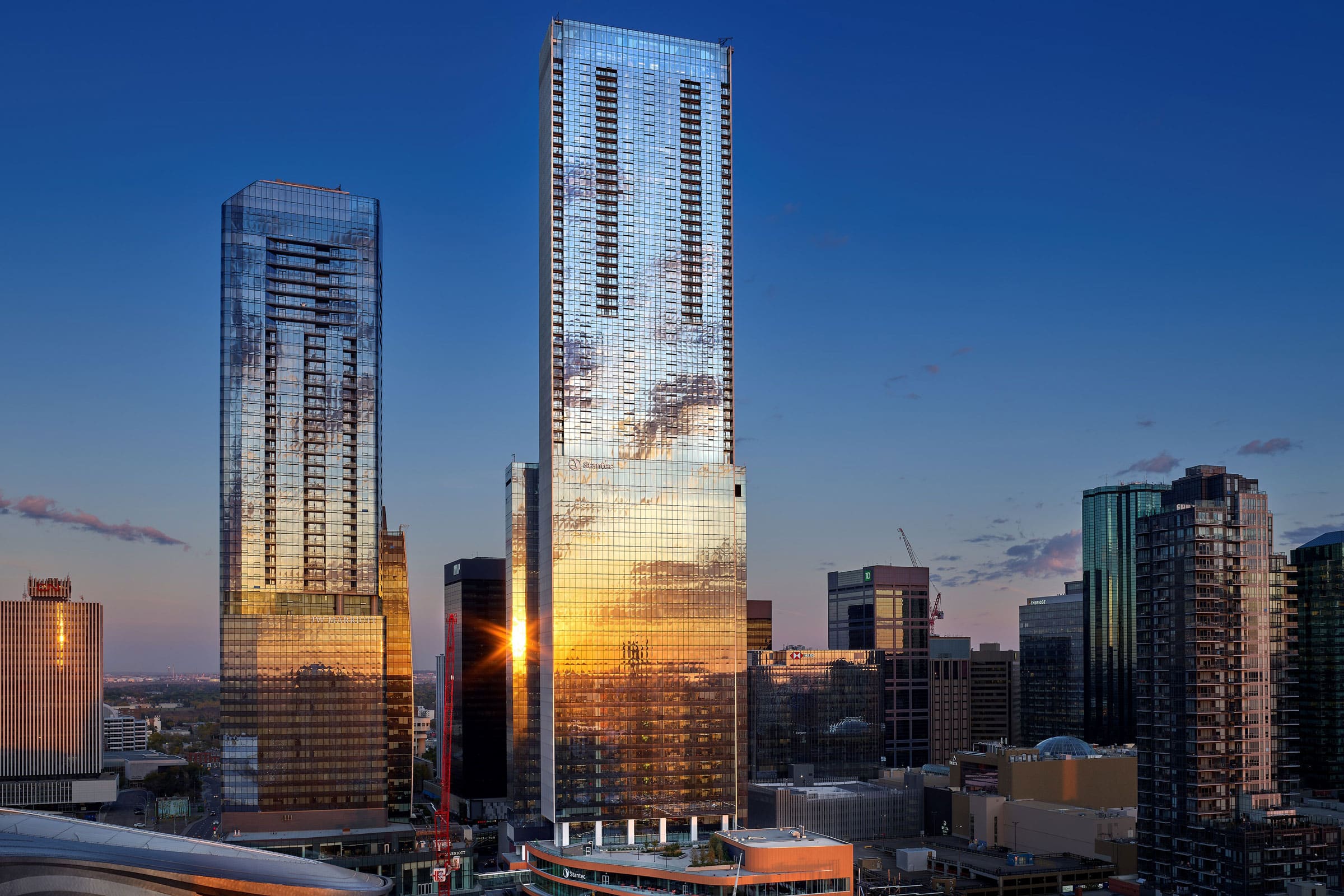Story at a glance:
- Thermal breaks are building components that have a low thermal conductivity and are used to reduce the flow of heat into and out of a structure.
- Companies like Schöck and YKK AP have pioneered solutions in thermal break technology.
- Some green building certifying bodies require projects implement thermal breaks to the highest degree.
As global temperatures continue to rise and energy becomes more expensive, the need for extremely airtight, well-insulated, energy-efficient structures has never been more important. AEC professionals are increasingly leaning toward strategies like air sealing and superinsulation to prevent energy waste and reduce buildings’ operational costs.
But heat is a tricky thing that, in accordance with the laws of thermodynamics, will always find the path of least resistance into a building—be it through wall studs, floor joists, window frames, roof penetrations, or even the fasteners used to attach that high R-value superinsulation.
These thermal bridges can be broken to keep heat from leaking in or out. This article serves as an introductory guide to thermal breaks and their importance within the field of green building.
What is a Thermal Break?
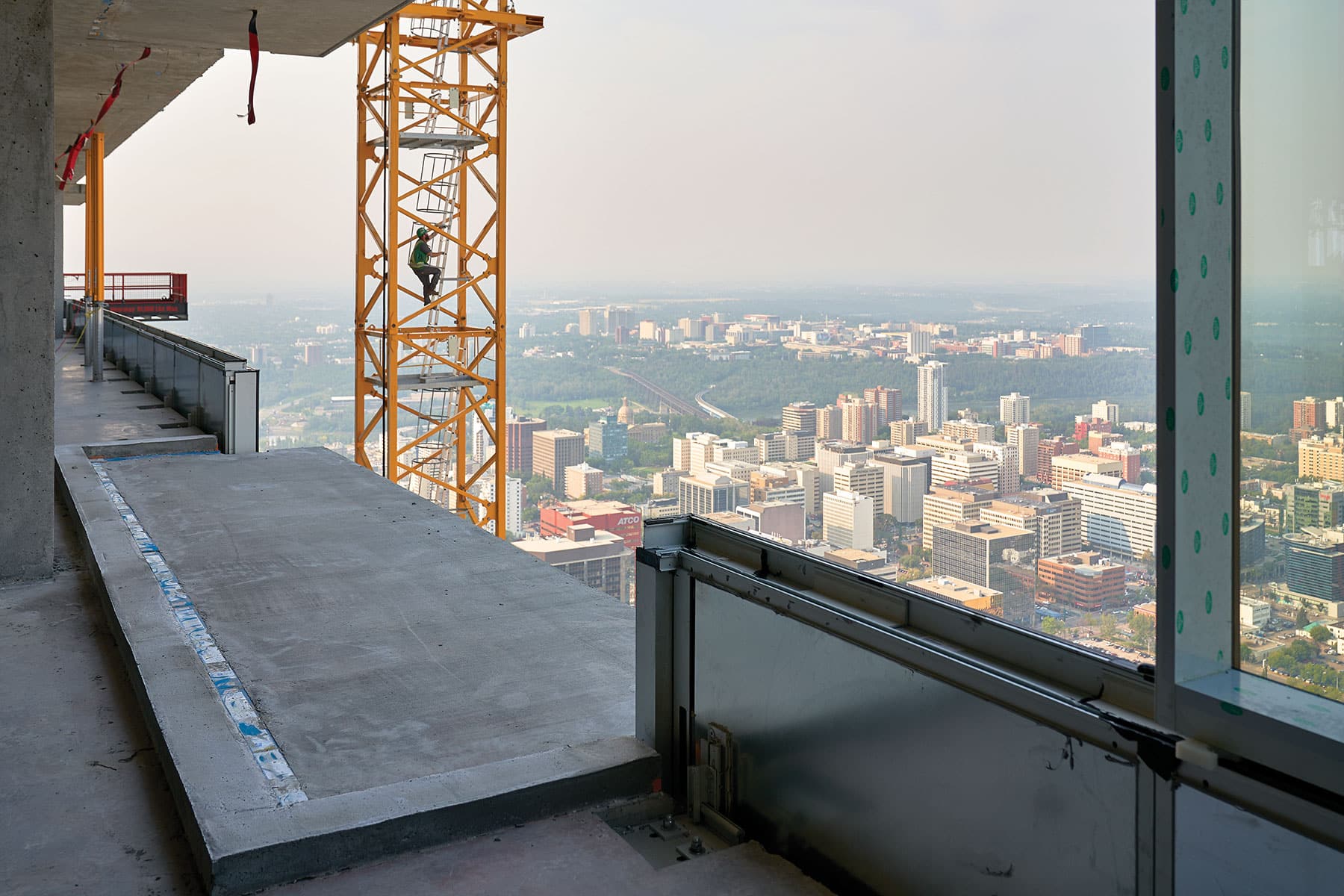
Construction at Stantec Tower in Edmonton. Photo courtesy of Schöck
A thermal break or thermal barrier is a component of construction that has a low thermal conductivity and high thermal resistance. Thermal breaks are placed between materials with comparatively high thermal conductivities—like concrete, aluminum, and steel—as a means of greatly reducing the unwanted flow of thermal heat energy into or out of a building.
Thermal breaks are an answer to thermal bridges, or those areas in a building’s envelope where heat is allowed to pass through from one side to the other with little resistance. This includes literal gaps in a structure’s insulation layer, thermally conductive elements that penetrate the envelope itself, and places in which thermally conductive materials come into contact with one another.
For maximum efficiency thermal breaks are constructed from materials with a high insulating factor (that is, a high R-value), a category that includes products like polyamide struts, polyurethane insulation, expanded polystyrene, and rigid-foam polyisocyanurate blocks.
The Importance of Thermal Breaks
Thermal breaks are an extremely important part of a building’s design as they help to improve energy efficiency by reducing instances of thermal bridging, which can account for as much as 30% of a building’s energy loss. By preventing energy waste thermal breaks help lower operational costs and reduce a structure’s greenhouse gas emissions.
In addition to reducing energy waste, thermal breaks also help prevent condensation from forming within a building’s envelope or interior. “Whenever you have a surface that’s below the dew point of the humidified interior air you are going to get condensation,” Nate Lambrecht, regional sales manager for Schöck North America, previously told gb&d. “This is a durability problem and a health concern. If you’re going to build a building to the best possible standard, you’re going to use a thermal break to not only minimize heat loss but also eliminate the risk of condensation.”
Eliminating the risk of condensation greatly reduces the risk of moisture build-up in interior spaces, minimizing the likelihood of mold or mildew growth that might otherwise contribute to poor indoor environmental quality and reduced occupant health.
By helping to better regulate interior temperatures and preventing condensation, thermal breaks ultimately make indoor environments more comfortable for their occupants. Together, these benefits have led to thermal breaks becoming more commonplace, with architects and engineers treating them as integral to the design of highly-efficient buildings.
“We’re getting much more sophisticated with our building envelope design,” Lambrecht says. “Major municipalities are updating building codes, and they’re pushing thermal breaks to be more of the norm as opposed to the exception. It’s part of a more holistic approach of saying, ‘OK, how do we make the tightest building envelope possible?’”
Where Are Thermal Breaks Used?
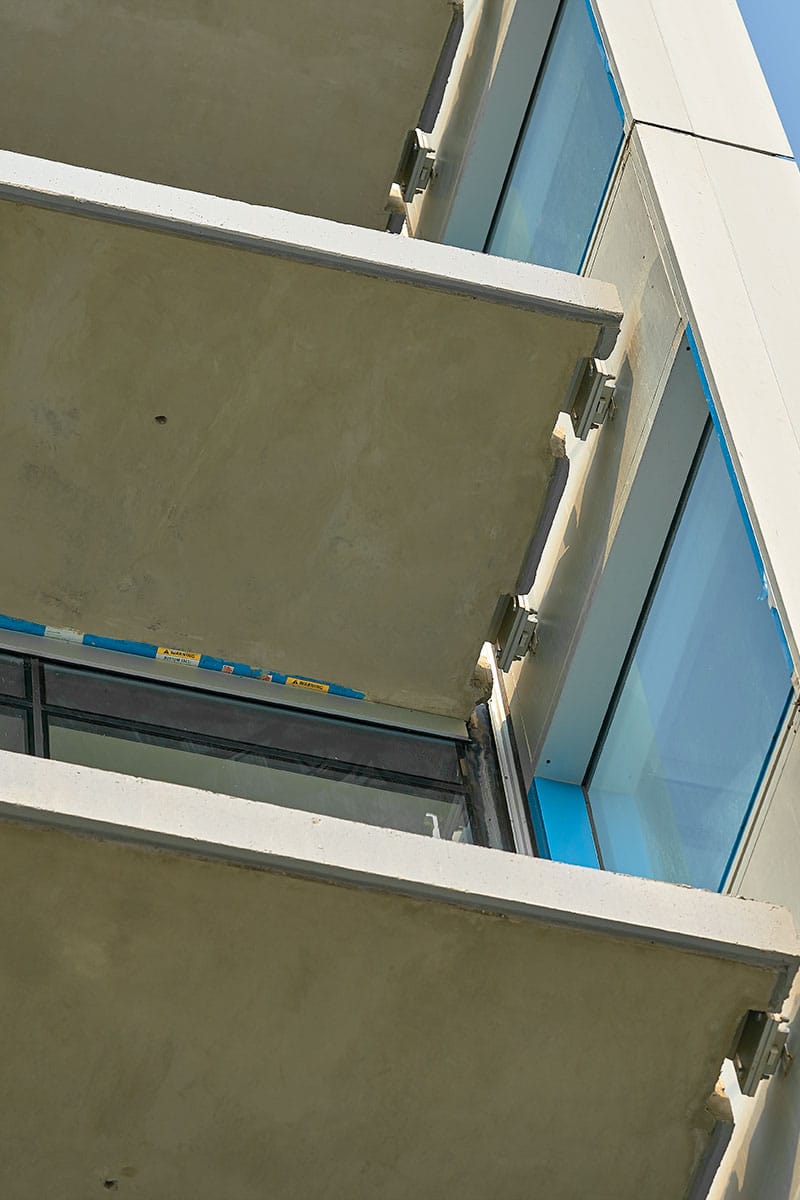
Thermal breaks at Stantec Tower. Photo courtesy of Schöck
In the practical sense, thermal breaks may be implemented anywhere thermal bridges occur and can be incorporated throughout a building’s design. “It isn’t difficult to integrate thermal breaks into a typical project,” Lambrecht says. “There can be occasions where the loading is outside of what would typically be possible, but if considered early enough in the design process there is usually a solution.”
Some of these locations include:
Floor-to-Wall Junctions
As an often overlooked area when it comes to thermal bridging, floor-to-wall junctions can account for 50% of even a well-insulated room’s heat loss. This can be mitigated in large part by installing highly insulative, load-bearing thermal building blocks underneath the wall’s sole plate (for timber- and metal-framed walls) or as a replacement for the last course of brick/concrete blocks in masonry walls.
Wall Assemblies
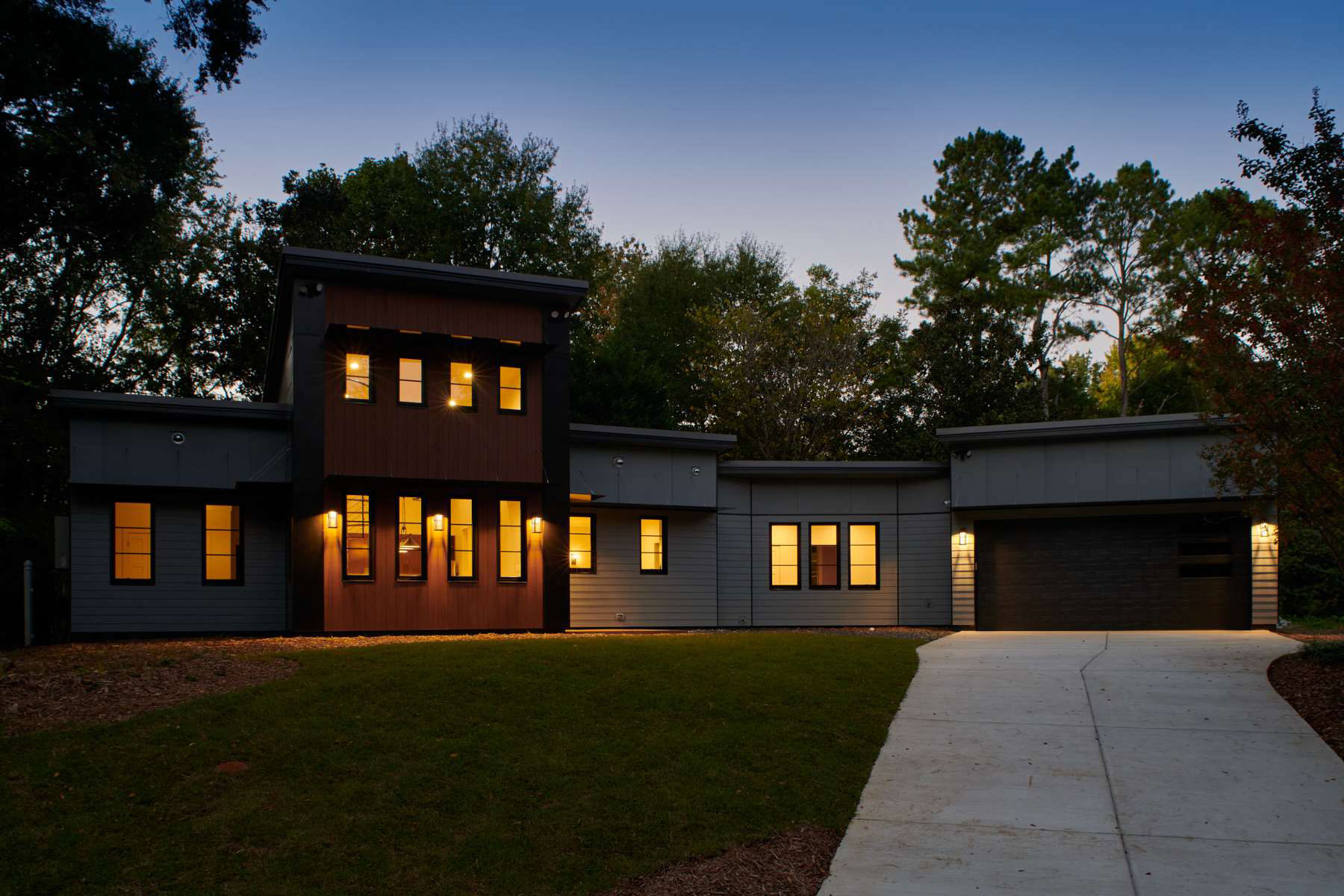
A contemporary three-bedroom house designed by LG Squared uses continuous stone wool insulation to keep the home a comfortable temperature while keeping energy demand low. Photo courtesy of LG Squared
Traditional timber- or steel-studded wall assemblies are a major source of thermal bridging, as the studs themselves are (typically) not insulated and provide convenient pathways for heat to enter or escape from. Wall studs are so effective at transferring heat, in fact, that they can reduce a wall’s overall R-value by anywhere from 14 to 63%.
Breaking these thermal bridges requires the installation of continuous insulation in addition to standard cavity insulation. Continuous insulation is an uninterrupted layer of insulating material applied over all structural members and typically takes the form of rigid foam insulation panels (e.g. polystyrene and polyisocyanurate boards) installed between a building’s framing and external cladding.
Fasteners and service openings are generally the only thermal bridges left in a wall assembly after continuous insulation is installed.
Balcony, Awning & Canopy Connections

Balconies, awnings, and architectural canopies are hotspots for thermal bridging. Image courtesy of Schöck
Another place where thermal breaks are especially beneficial is at the connection points for balconies, awnings, canopies, and other building features that project or protrude from a structure’s facade. These features often act as thermal bridges because, while primarily located outside, they still must be attached to internal structural components.
Schöck—the world’s largest producer of structural thermal breaks—offers a variety of solutions that make use of their proprietary Isokorb® thermal break material. Featuring a graphite-enhanced block of expanded polystyrene insulation and stainless steel rebar for shear resistance and tension, Isokorb products eliminate thermal bridging and provide the necessary structural support for safe installation and use.
Depending on certain conditions, Isokorb thermal breaks are capable of eliminating up to 95% of the energy transfer through concrete-to-concrete connections.
Roof Penetrations & Parapet Roofs
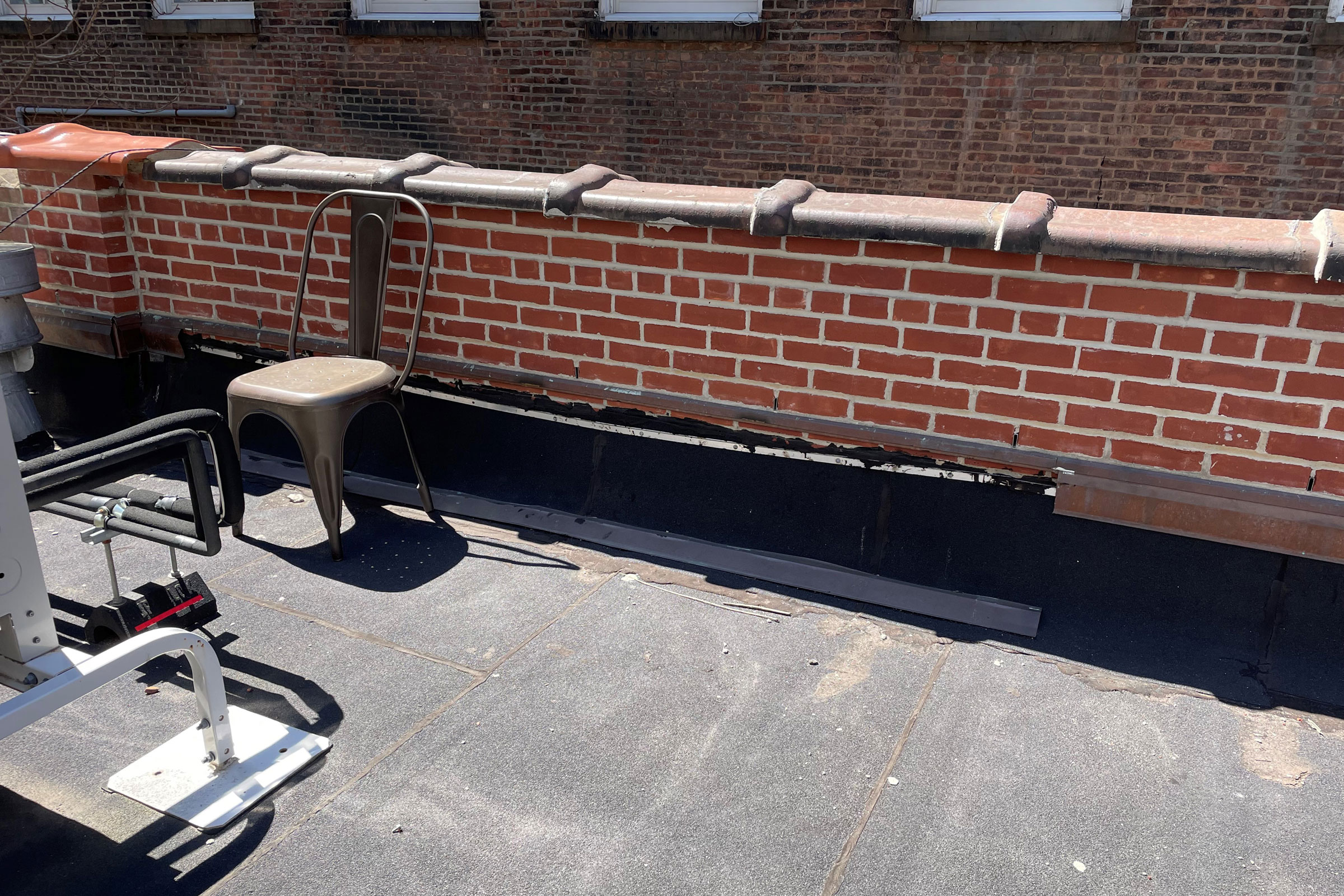
Parapet roofs and other rooftop penetrations must be thermally broken to prevent unwanted heat transfer. Photo courtesy of Bellet Construction
Penetrations in a building’s roof assembly—like anchor points, davits, dunnage supports, et cetera—extend below the insulation layer and connect to internal trusses or other structural elements to create thermal bridges. The same goes for parapets, or those low protective barriers constructed around a roof’s perimeter as an extension of a building’s main exterior walls.
These bridges can be broken through the addition of structural thermal insulation blocks and thermally insulated hardware like washers or bushings. Schöck also carries Isokorb products suitable for rooftop applications such as these.
Curtain Walls & Aluminum Framing Systems

The Harrison Path Train Station in Harrison, New Jersey leverages YKK AP subsidiary Erie AP’s ENVIRO|FACADES unitized curtain wall. Photo courtesy of YKK AP
Curtain walls are incredibly common features in contemporary commercial real estate, but their use of aluminum framing systems has historically caused issues with thermal bridging. “In the past, aluminum framing systems were known for their high thermal conductivity, or vulnerability to heat gain and loss,” Steve Schohan, marketing and communications manager at YKK AP America, previously wrote for gb&dPRO. “But in recent years, innovations in framing have driven thermal performance to new heights, helping to meet and exceed evolving energy codes, and solidify its primary position in a building’s energy-efficient design.”
Two of the most effective innovations in thermal breaking include polyamide pressure plates and the pour and debridge method.
Polyamide Pressure Plates
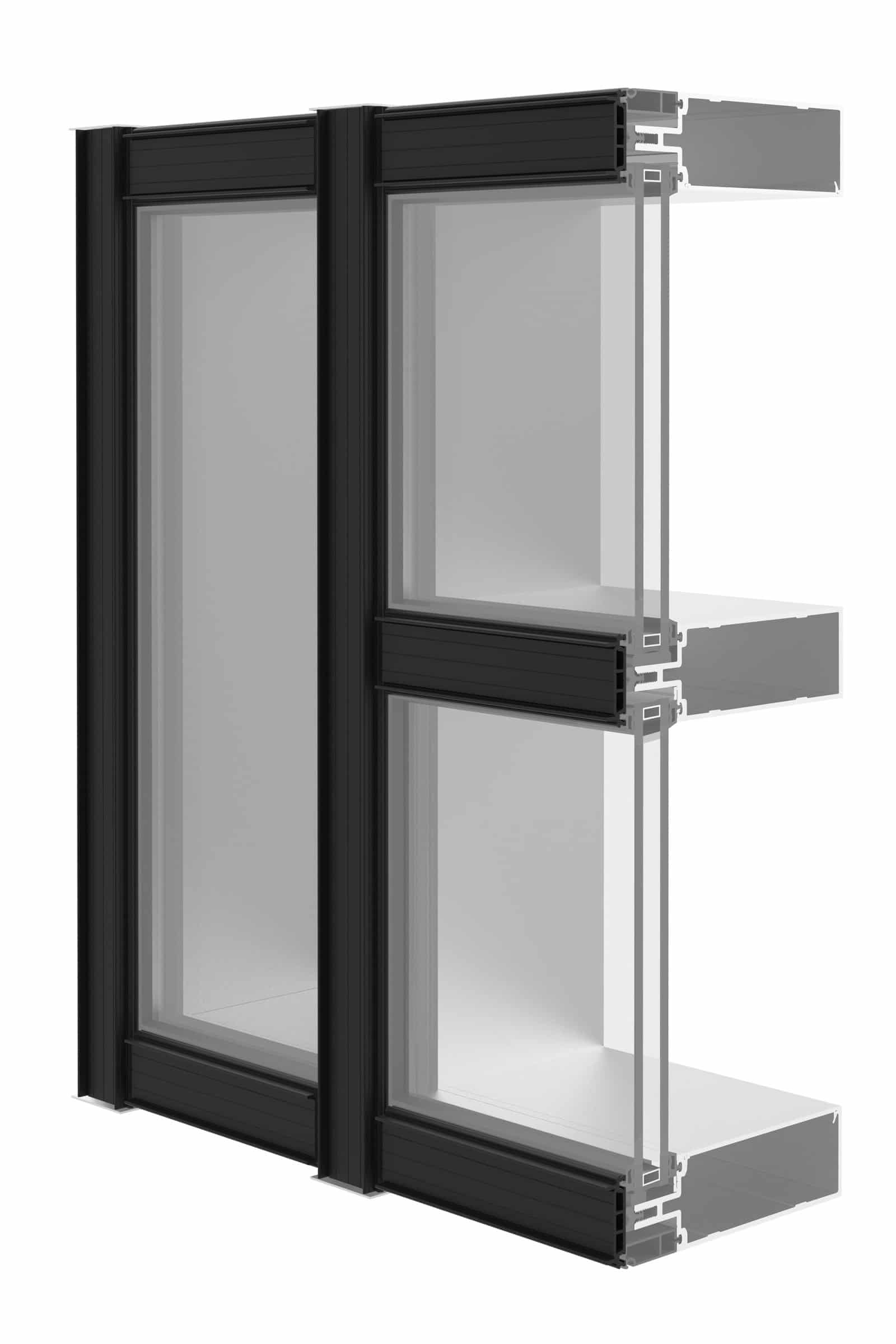
A polyamide pressure plate framework, which replaces the traditional aluminum plate and acts as a thermal break. Photo courtesy of YKK AP
YKK AP—a world leader in the manufacture of aluminum building products—has started replacing the traditional aluminum pressure plates in their curtain wall systems with ones made from polyamide, a nylon-based plastic that is strong, lightweight, and flexible.
“A polyamide composition, for example, has significantly lower thermal transmission values than aluminum, providing structural and thermal performance that yields performance increases of up to 20% reduction in U-factor,” writes Schohan.
Pour and Debridge
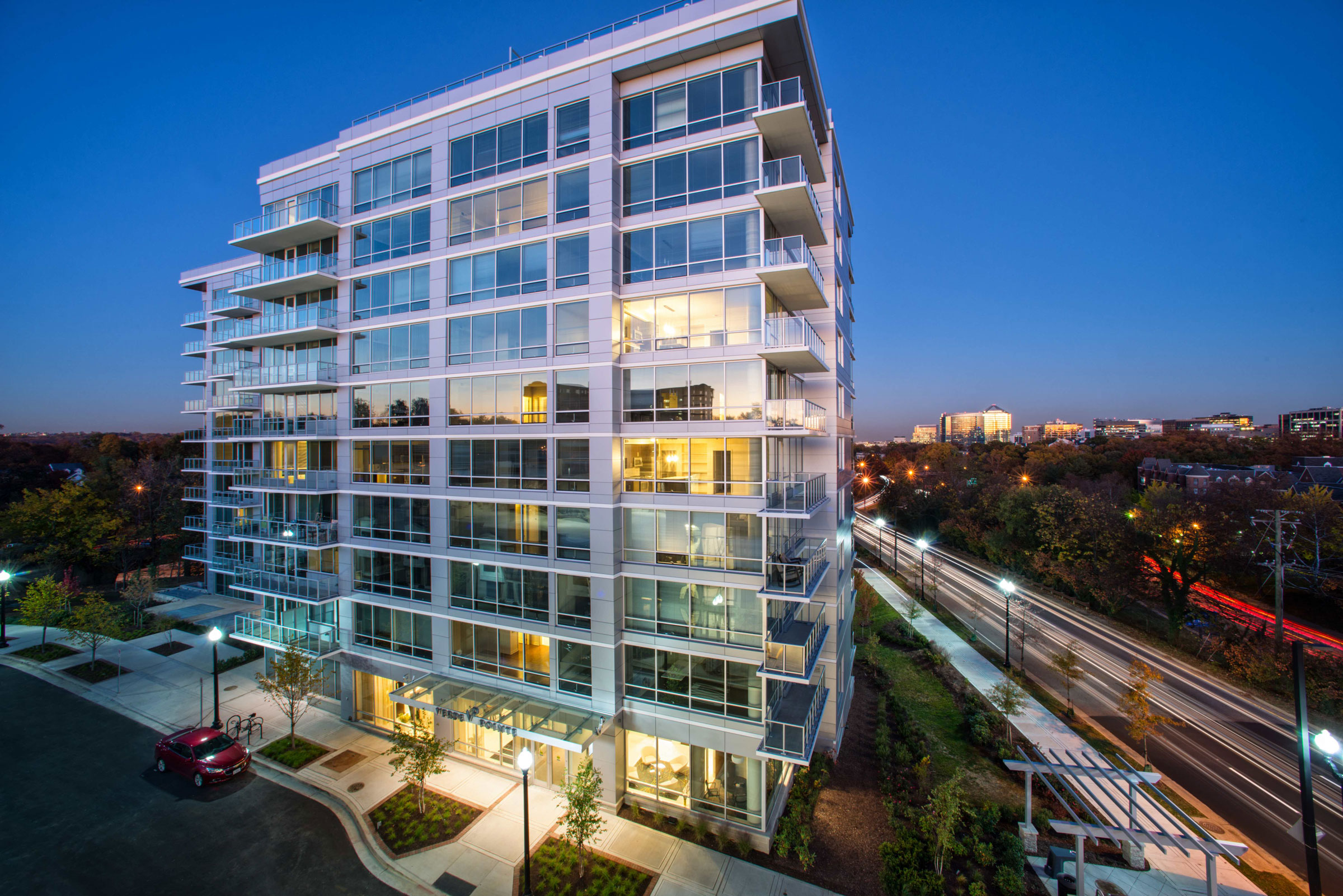
A pour and debridge process helps break thermal bridges in aluminum framing systems. Photo courtesy of YKK AP
Many curtain wall and aluminum framing manufacturers have also started using a pour and debridge process to improve thermal performance.
“A pour and debridge process creates thermal breaks and improves energy performance by filling a channel in the aluminum extrusion with a polyurethane material and then removing, or debridging, the bottom of the channel,” Schohan writes. “The outside of the aluminum frame is thermally isolated from the inside of the aluminum within the glazing system. This process delivers strong energy savings economically.”
YKK AP has further improved this process with the development of ThermaBond Plus—which strengthens the polyurethane material’s adhesion to the aluminum—and MegaTherm, which utilizes 6/6 nylon polyamide glass fiber reinforced isobars to join the two separate extrusions into a single unbroken mullion.
Windows & Doors
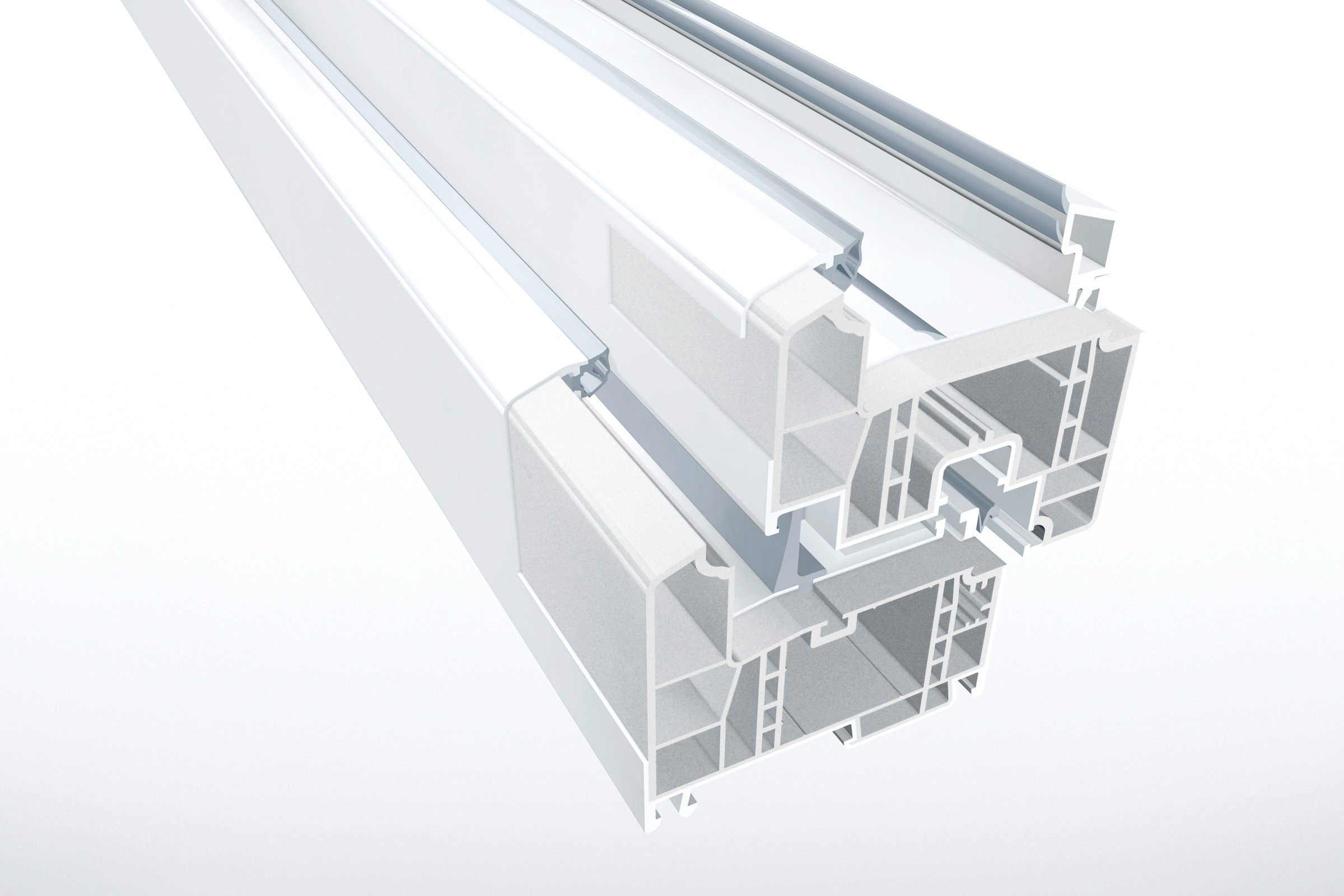
RAU-FIPRO profiles consist of two proprietary materials—a calcium-zinc fortified PVC outer layer and a glass-fiber reinforced PVC inner core—that together provide superior thermal performance, weatherability and strength to scale to larger unit sizes. Photo courtesy of REHAU
Heat transfer through glass windows can result in significant energy losses, though it can be limited by choosing double- or triple-glazed windows in which argon or some other inert (non-conductive) gas is pumped into the space between each pane as an insulator. Doors, on the other hand, can be thermally broken by “wrapping” a rigid-foam insulation core in fiberglass skins or, in the case of metal hollow-core doors, through the injection of polyurethane foam insulation into the central cavity.
And similar to aluminum framing systems and curtain walls, window and door frames can be improved upon by adding thermal break insulation strips/blocks between the inside and outside of the frame and sash. It is also possible to avoid the need for thermal breaks altogether by choosing framing materials like PVC that have a naturally low conductivity.
Thermal Breaks & Passive House Certification
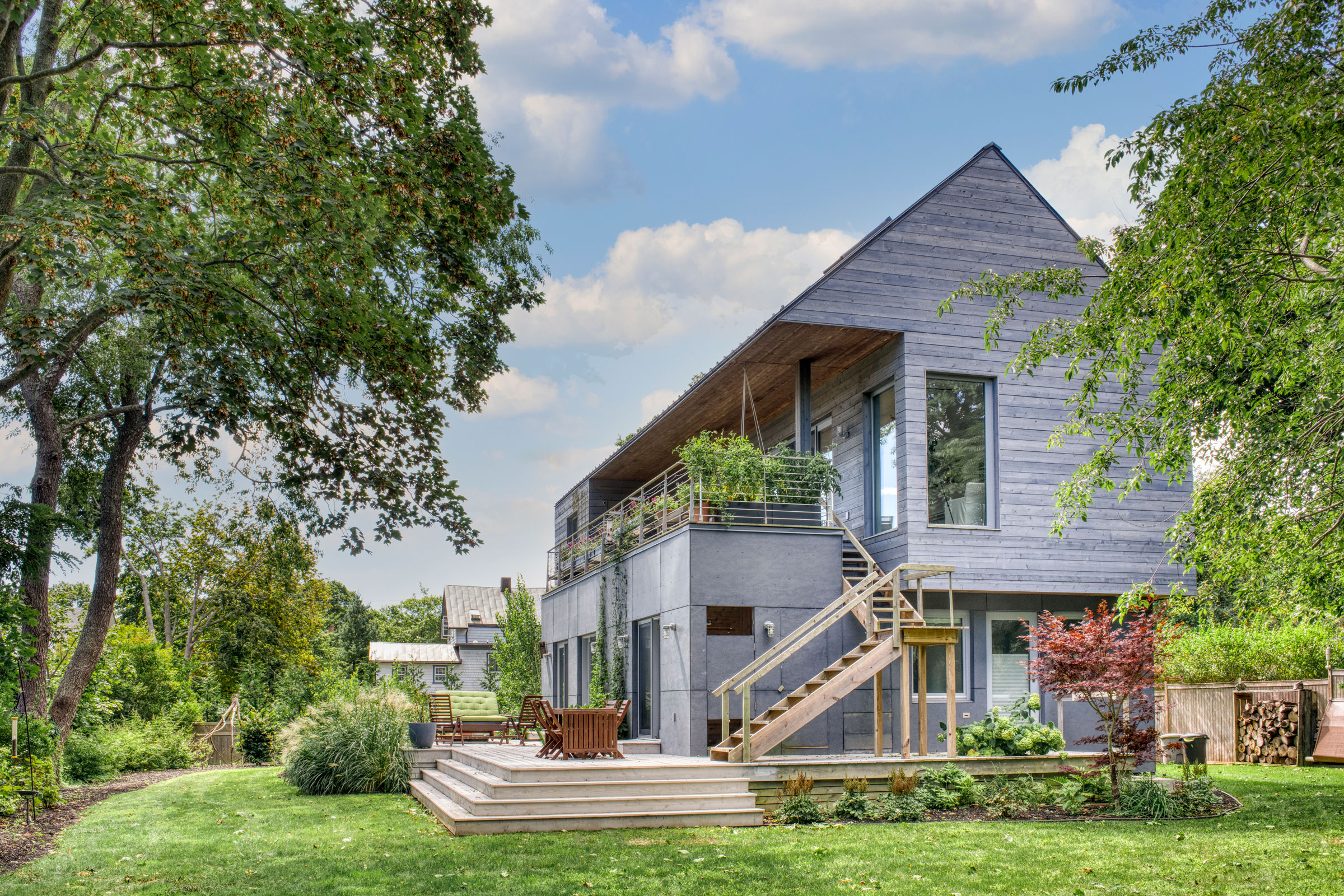
Wayne Turett, founder and principal of The Turett Collaborative, designed and constructed his own passive house in Greenport, New York. Thermal bridge-free design is a crucial component to achieving Passive House certification. Photo by Liz Glasgow
While there are many green building rating systems that prioritize energy efficiency, comparatively few explicitly require the extensive use of thermal breaks throughout a building’s design. Both the Passivhaus Institute (PHI) and Phius, however, specifically identify the reduction of thermal bridging as being integral to certification, with PHI going so far as to make thermal-bridge-free design one of its five core design principles.
Of course, it’s impossible to completely eliminate thermal bridges from a structure’s envelope, but it is possible to reduce thermal bridges to a point where they have a negligible impact on a project’s energy consumption. For all intents and purposes, PHI considers any project that achieves a Ψ value of 0.01 W/mK or less as being thermal bridge–free.

